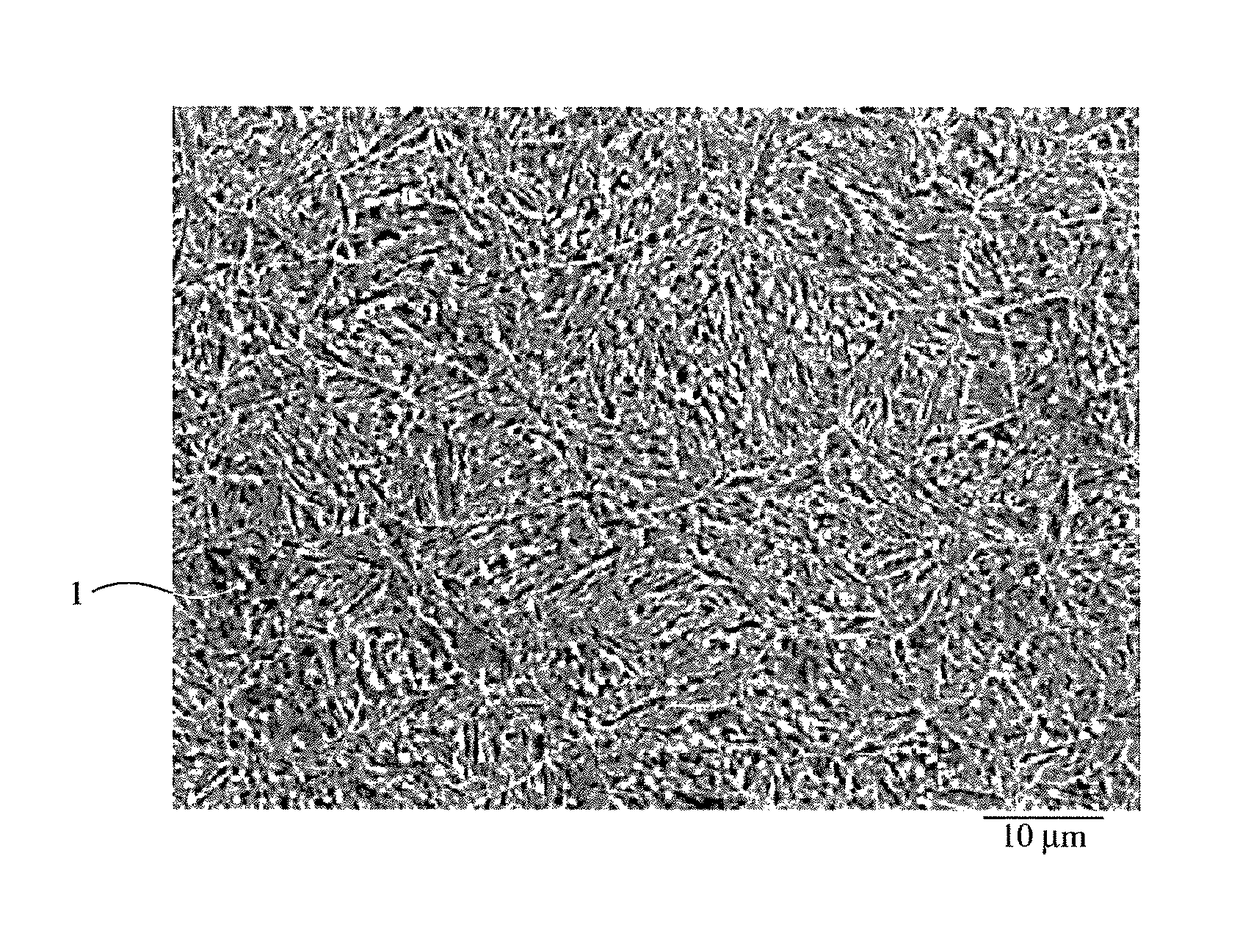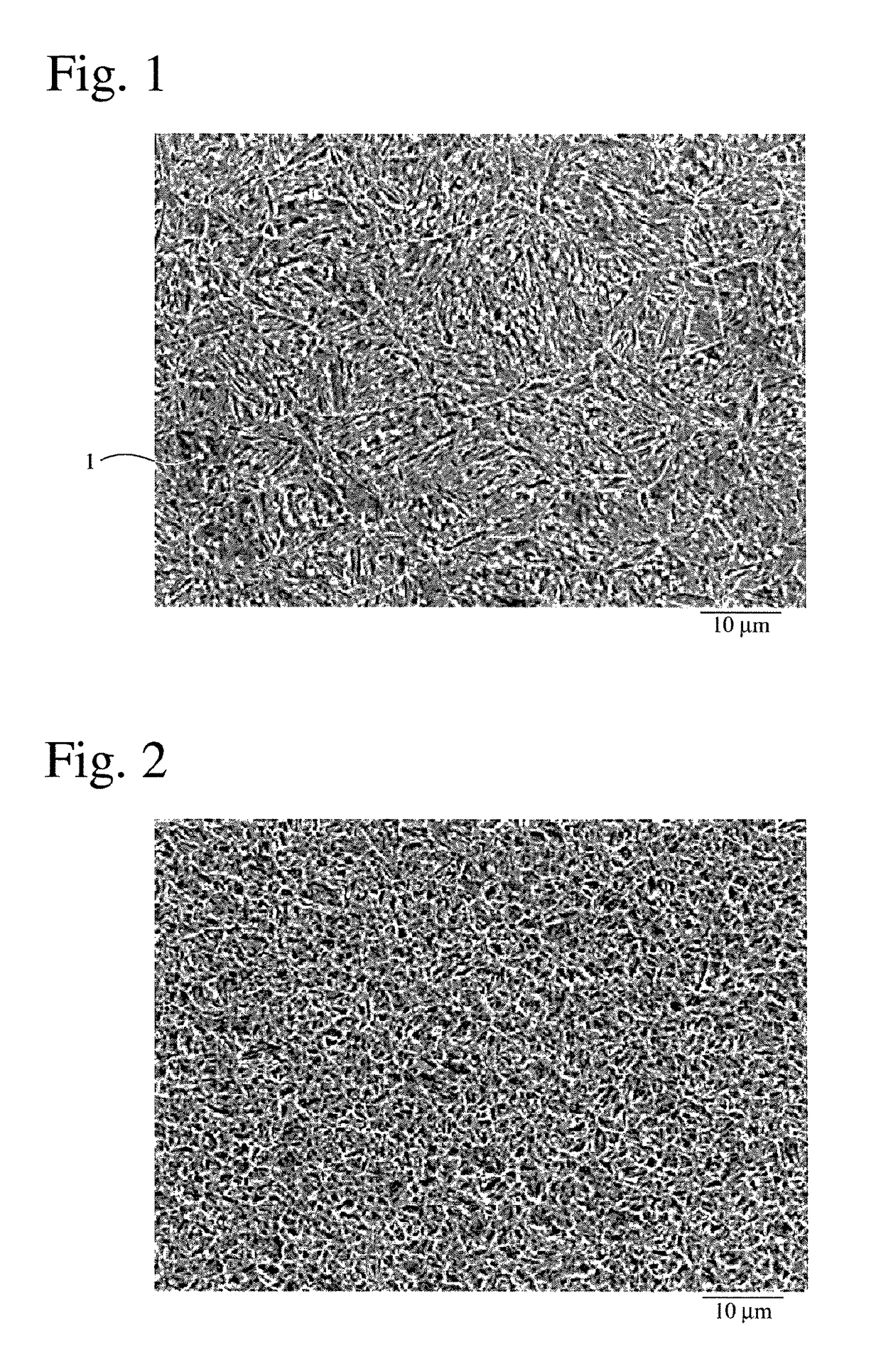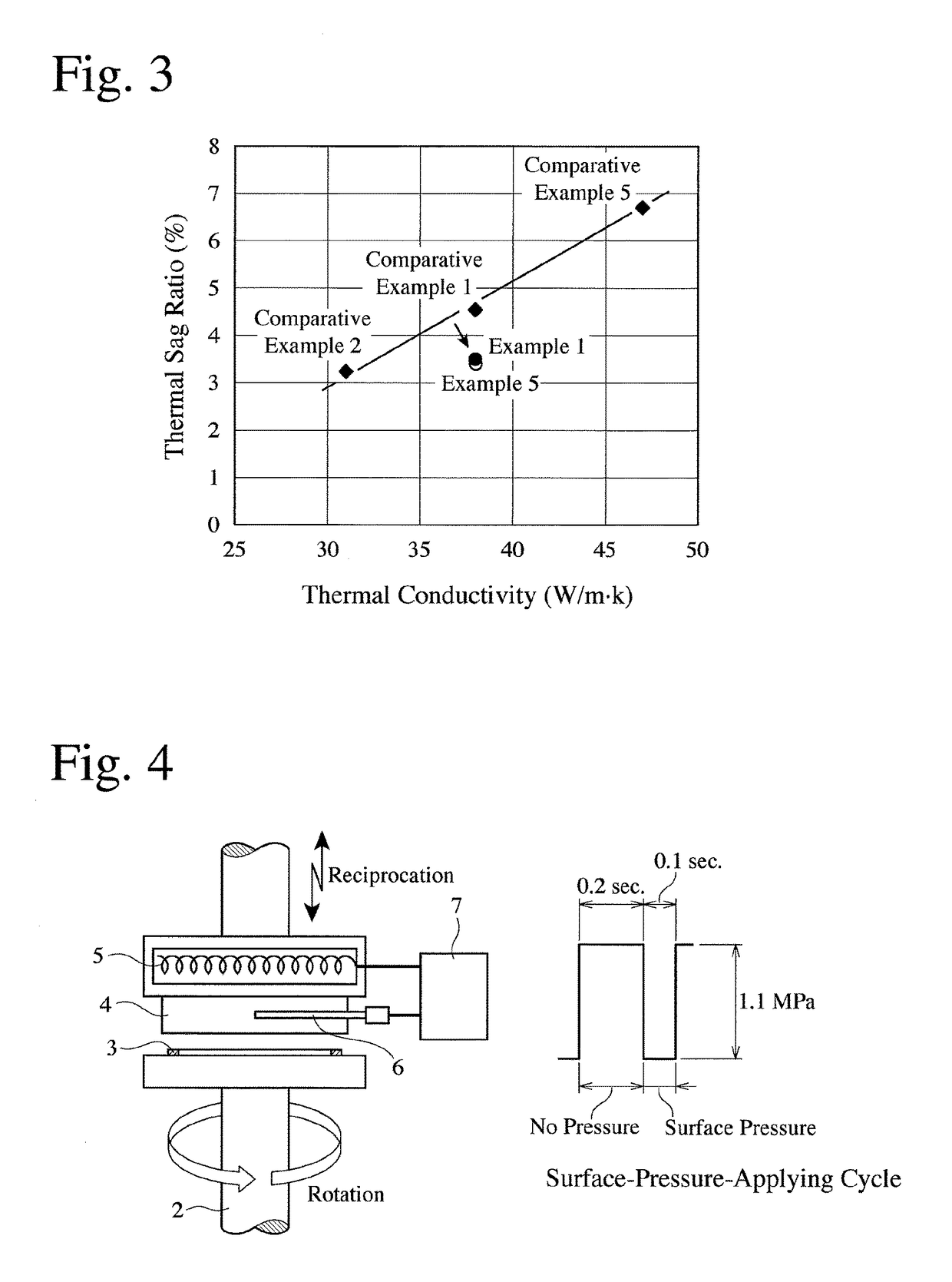Compression ring and its production method
a compression ring and production method technology, applied in the direction of heat treatment equipment, braking systems, furnaces, etc., can solve the problems of deteriorating thermal sag resistance and the inability to use compression rings in high-thermal-load environments, and achieve excellent thermal conductivity and thermal sag resistance, good price competitiveness
- Summary
- Abstract
- Description
- Claims
- Application Information
AI Technical Summary
Benefits of technology
Problems solved by technology
Method used
Image
Examples
examples 1-3
E1 to E3
[0024]Each wire of SUP10 steel rolled to 8 mm in diameter was formed into a rectangular cross-sectioned wire of 1.0 mm in thickness and 2.3 mm in width, by conducting an annealing step at 700° C. for 60 minutes in place of the second patenting treatment, in a wire-forming process comprising heating at 900° C., patenting at 600° C., washing with acid, wire drawing, heating at 900° C., patenting at 600° C., washing with acid, wire drawing and oil-tempering. The oil-tempering treatment comprised a quenching step in an oil at 60° C. after heating at 930° C. for 45 seconds, and a tempering step at 470° C. for 60 seconds. FIG. 1 shows the structure of the wire observed by a scanning electron microscope, in which white fine spheroidal cementite (1) was dispersed in a tempered martensite. Image analysis on an enlarged photomicrograph of this structure revealed that the spheroidal cementite had an average particle size of 0.8 μm and an area ratio of 2.4%.
examples 4-5
E4 to E5
[0025]Each rectangular cross-sectioned wire of 1.0 mm in thickness and 2.3 mm in width was produced from the SUP 10 steel by conducting annealing at 700° C. in place of the second patenting treatment as in Examples 1-3. To control the spheroidal cementite dispersed in a tempered martensite matrix, the temperature of heating before quenching in the oil-tempering treatment was 980° C. in Example 4, and 820° C. in Example 5. Image analysis conducted in the same manner as in Example 1 on scanning electron photomicrographs of the wire structures revealed that the spheroidal cementites in Examples 4 and 5 had average particle sizes of 0.4 μm and 1.2 μm, respectively, and area ratios of 0.3% and 5.3%, respectively.
[0026]Each rectangular cross-sectioned wire of 1.0 mm in thickness and 2.3 mm in width in Examples 1-5 was formed into a compression ring having a nominal diameter of 73 mm, which was subject to a coating treatment shown in Table 2. Namely, a peripheral surface of the com...
PUM
| Property | Measurement | Unit |
|---|---|---|
| thermal conductivity | aaaaa | aaaaa |
| thermal conductivity | aaaaa | aaaaa |
| temperature | aaaaa | aaaaa |
Abstract
Description
Claims
Application Information
 Login to View More
Login to View More - R&D
- Intellectual Property
- Life Sciences
- Materials
- Tech Scout
- Unparalleled Data Quality
- Higher Quality Content
- 60% Fewer Hallucinations
Browse by: Latest US Patents, China's latest patents, Technical Efficacy Thesaurus, Application Domain, Technology Topic, Popular Technical Reports.
© 2025 PatSnap. All rights reserved.Legal|Privacy policy|Modern Slavery Act Transparency Statement|Sitemap|About US| Contact US: help@patsnap.com



